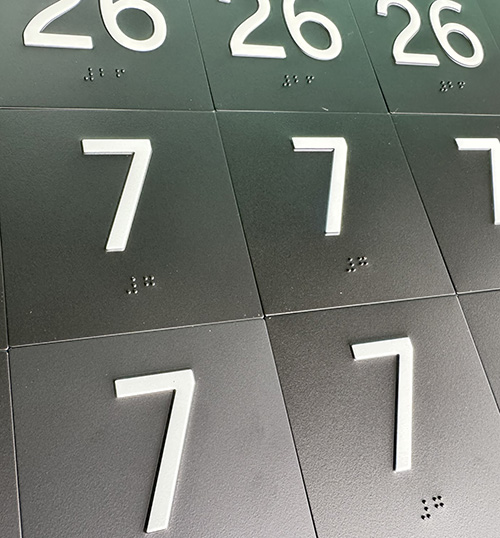ADA Compliant Font Guidelines
Below are several ADA compliant font rules, ensuring accessibility for blind or visually impaired persons (US Access Board).
- Depth (703.2.1). Raised characters (tactile) must be raised a minimum of 1/32”.
- Case (703.2.2). Characters must be uppercase (lowercase should be avoided).
- Style (703.2.3). Only Sans Serif characters, not in italics nor script. ADA compliant fonts include Arial, Helvetica, Verdana and Tahoma. TRADA SIGNS defaults to SansSerif (if not specified).
- Proportions (703.2.4). Characters with fonts where the width of the uppercase “O” is 55 percent minimum and 110 percent maximum of the height of the uppercase “I”.
- Height (703.2.5). Measured 5/8” to 2” based on the uppercase “I”.
- Stroke Thickness (703.2.6). Stroke thickness of the uppercase “I” shall be 15 percent maximum of the character height.
- Character Spacing (703.2.7). Minimum 1/8” of space between adjoining characters.
- Line Spacing (703.2.8). Spacing between baselines of separate lines of raised characters in a message 135 percent minimum and 170 percent maximum of the raised character height.


